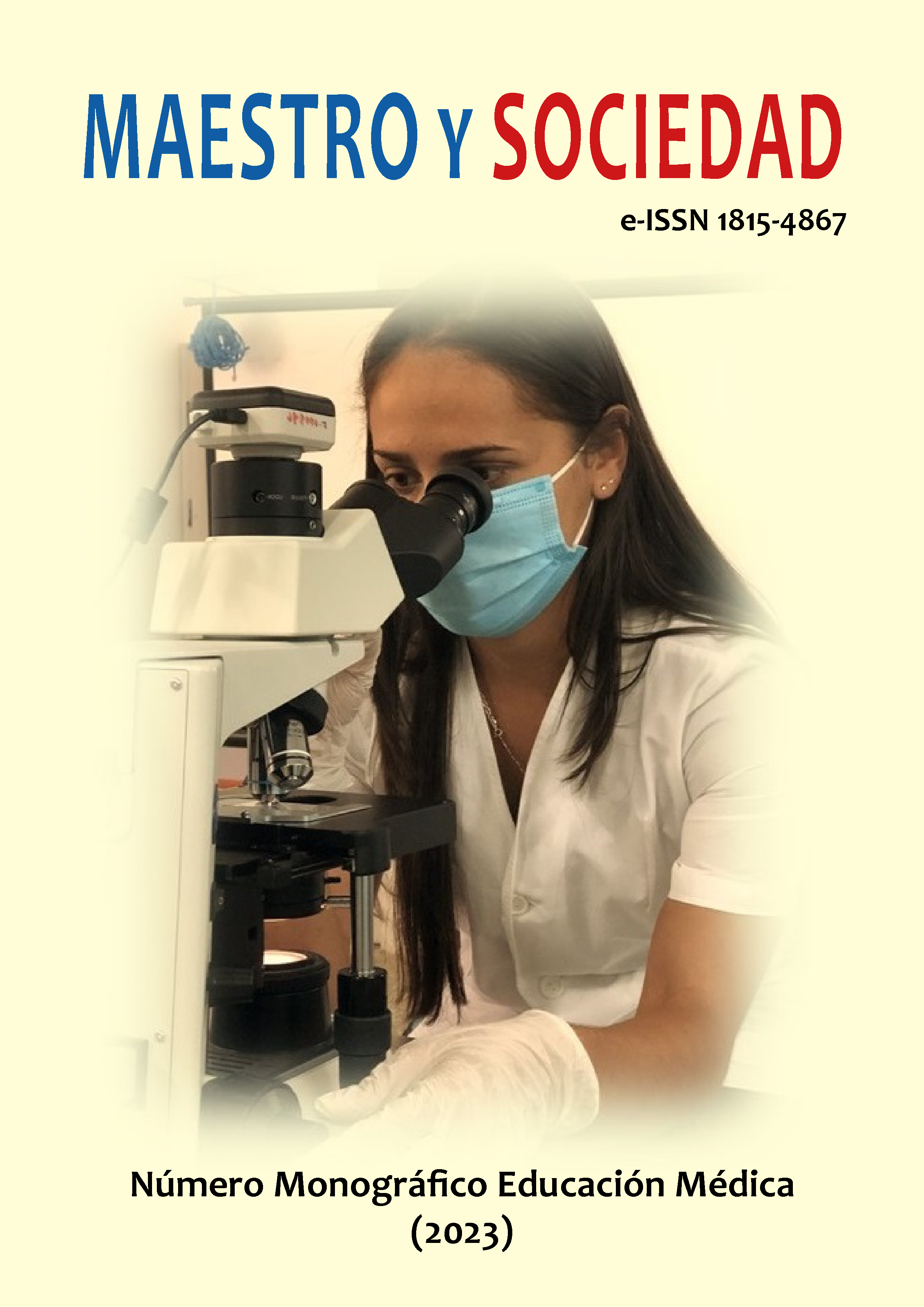Characterization of the historical trends in the teaching of Biostatistics
Characterization of the historical trends in the teaching of Biostatistics
Keywords:
medical students, historical trends, biostatistics teaching, biostatistical results, interpretationAbstract
Introduction: Statistics is a discipline that has become an effective tool to describe the values of economic, political,
social, psychological, biological or physical data, and facilitates relating and analyzing such data, thus preparing future
professionals for apply methods that consist of collecting, summarizing, presenting information and interpreting the
results, in particular, to the student of Medical Sciences. Objective: Characterize the historical ones that determined the teaching of Biostatistics in students of the Medicine career. Material and Methods: Theoretical sources were used such
as: review of specialized literature, methodological guidelines of educational centers, educational policies established
at required times, Study Plans, among other documents. Results: The subject of the interpretation of its results has not
been widely addressed from its didactic projection, since there are difficulties with the interpretation of the biostatistical
results and the way of professional action from the Main Integrative Discipline as a fundamental axis in the identification
and solution of health research problems and the use of research results in decision-making in comprehensive medical
care and health management, with the help of the rest of the training disciplines. Discussion: The purpose of Biostatistics
is to prepare the Medical Sciences student in the collection, processing, presentation and interpretation of health data,
making efficient use of statistical tools designed for this purpose. In this sense, various authors recognize that the
teaching of Biostatistics has been included, for a long time, in professional training as a seal to promote scientificity in
the investigative performance of the doctor. The interpretation of biomedical data is one of the pillars of the scientific
method, once the data analysis phase has been reached, which has been greatly simplified thanks to the development
of computer packages, making it easier for the researcher to draw conclusions and present the data in communications
and scientific publications. (Herrera, 2013. Conclusions: The trend study carried out revealed that the actors of the
process recognize the constant improvement regarding Biostatistics in all its historical evolution, however, difficulties still
appear in the teaching-learning process of the health professional to use the interpretation of data in the understanding
of the empirical study of facts and phenomena inherent to the science that is studied.
References
González, N. y Sarria, E. (2014). El eje curricular de investigación y la informática en las carreras de Ciencias
Médicas. RCIM, (2). http://www.rcim.sld.cu/revista_19/articulo_htm/estrategiacurricular.htm.
Delgado, G. (2014). Desarrollo histórico de la enseñanza médica superior en Cuba desde sus orígenes hasta nuestros
días. Educ Med Sup, 18(1). http://scielo.sld.cu/scielo.php?script=sci_arttext&pid=S0864-21412004000100007&lng=es
&nrm=iso
Domínguez, R. (2007). El currículo de la carrera de medicina desde una perspectiva sistémica. Rev Cubana Educ
Sup, 27(1), 3-8.
Herrera, G. (2013). Tendencias actuales del proceso de formación de habilidades investigativas en estudiantes
de la carrera de Medicina. Rev Ciencias Médicas.
Álvarez, C. (1989). Fundamentos teóricos de la dirección del proceso docente educativo en la Educación Superior
Cubana. Ed. MES.
Batanero, C. (2000). Errores y dificultades en la comprensión de los conceptos estadísticos elementales. Revista
International Journal of Mathematics Education in Science and Technology, 25(4).
Addine, F. (2004). Didáctica Teoría y Práctica. Editorial Pueblo y Educación.
Santander Montes, A. (2007). Una aproximación a la caracterización del rendimiento académico en Informática
en Salud. Revista Cubana de Informática.
Madiedo, A., et al. (2011). Fundamentos teóricos del tratamiento didáctico de los objetivos para la formación
de habilidades intelectuales y prácticas en la carrera de Medicina. Educ Med Super, 25(2). http://scielo.sld.cu/scielo.
php?script=sci_arttext&pid=S0864-21412011000200011&lng=es&nrm=iso&tlng=es
Garfield, J. B., et al. (2014), Investigación en Educación Estadística: Algunas Cuestiones Prioritarias [monografía
en Internet]. Statistical Education Research Newsletter, 1(2), http://www.ugr.es/~batanero/ARTICULOS/Investiga.pdf.
Byrne, N. y Rosenthal, M. (2014). Tendencias actuales de la educación médica y propuesta de orientación para
la educación médica en América Latina.
Published
How to Cite
Issue
Section
License
Copyright (c) 2023 Katia Aguilera Díaz, Maidilis Beltrán Moret, Iradelmis Vaillán Beltrán, Alicia Susana Tamayo del Río

This work is licensed under a Creative Commons Attribution-NonCommercial-NoDerivatives 4.0 International License.
This journal provides immediate open access to its content, based on the principle that offering the public free access to research helps a greater global exchange of knowledge. Each author is responsible for the content of each of their articles.


























 Universidad de Oriente
Universidad de Oriente 